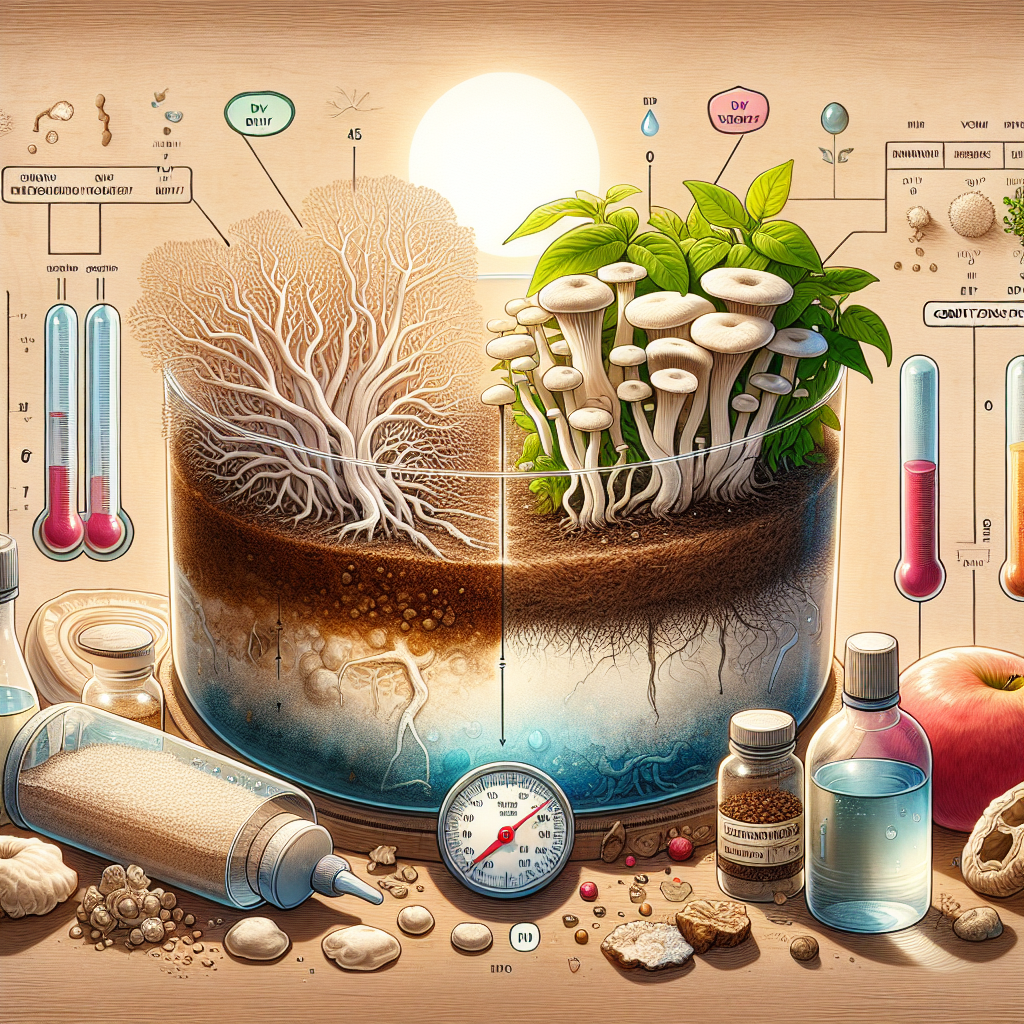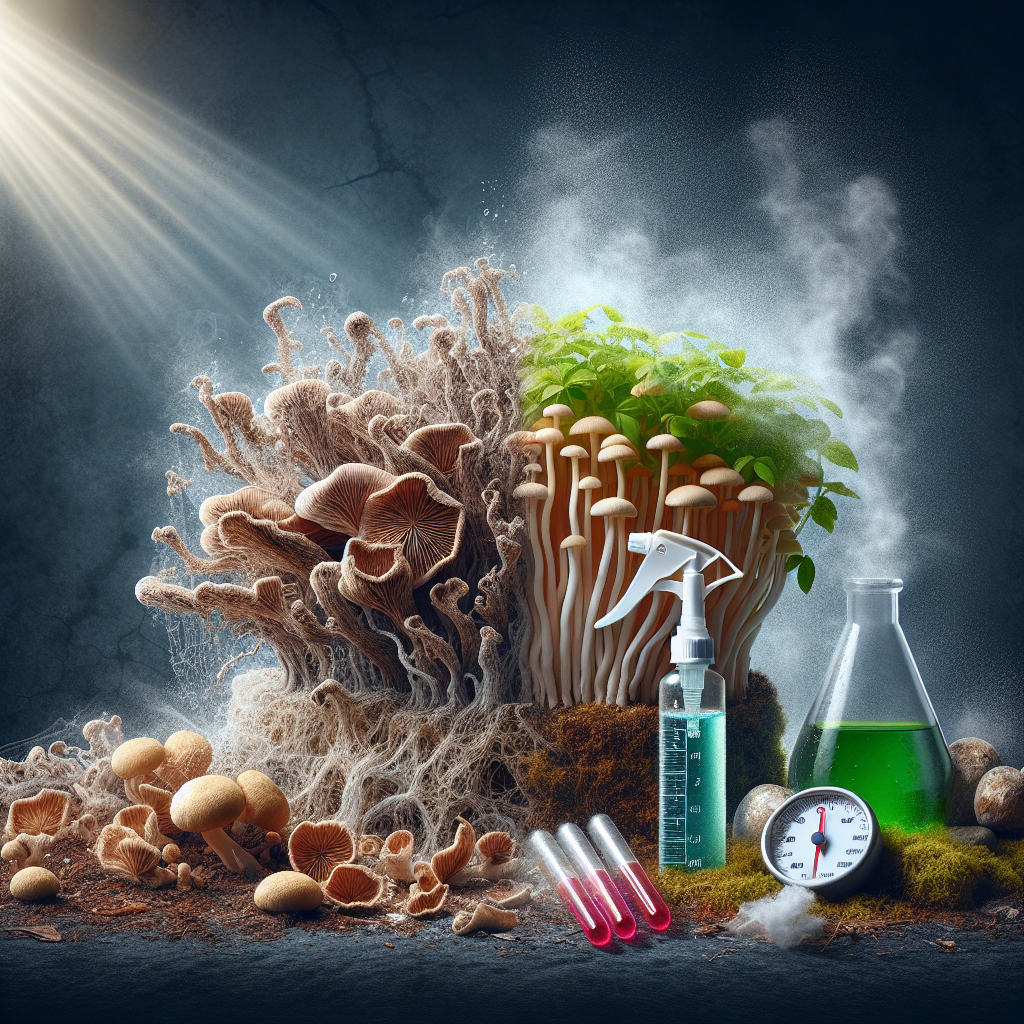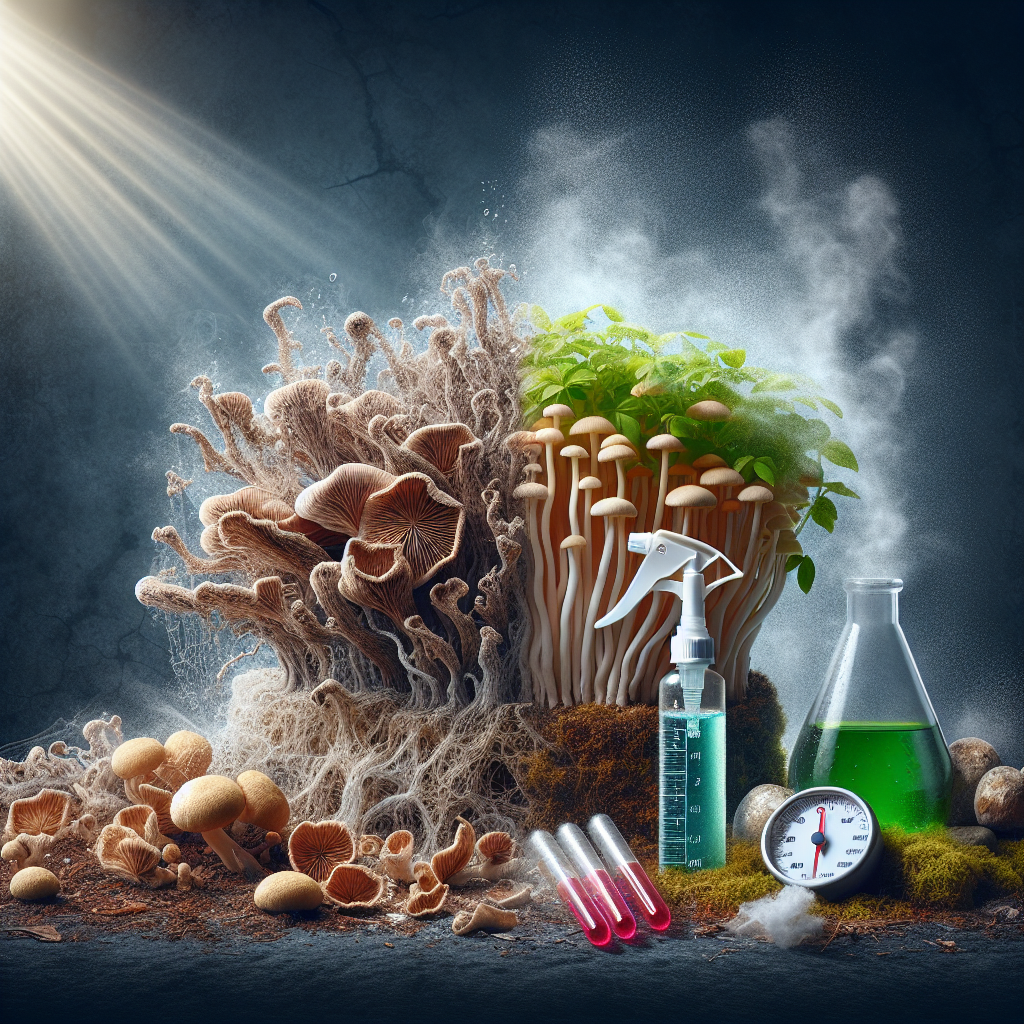Navigating the intricacies of mycology can be a challenging endeavor, particularly when you encounter issues like dry mycelium. In “How to Revive Dry Mycelium: A Comprehensive Guide”, you will be expertly guided through a step-by-step process designed to breathe new life into your mycelium. You will be provided with practical tips, strategies, and the succinct knowledge necessary to understand the principles of mycelium hydration and revival techniques. By the end of this guide, you should have the proficiency required to rejuvenate dry mycelium effectively.

Understanding Dry Mycelium
Understanding dry mycelium is key to its successful revival. But before we delve into how to do this, let’s understand what mycelium is.
What is Mycelium?
Mycelium refers to a network of fungal filaments called hyphae that forms the vegetative part of fungi. This mold-like growth is the main mode of nutrient acquisition for the fungus and plays significant roles in the decomposition of organic matter, nutrient cycling, and exchange in ecosystems.
How does Mycelium become dry?
Mycelium can become dry due to several reasons, including lack of proper moisture and care, exposure to excessively dry conditions, and neglect over time. Mycelium needs consistent moisture for growth. Without it, the network of hyphae hardens and dries out, leading to decreased functionality and potential damage.
Effects of dryness on Mycelium
Dryness can inhibit the growth and functionality of mycelium. It lacks the necessary moisture to transport nutrients, leading to growth stagnation or even death. Consequently, revival becomes necessary to restore these complex life forms’ ability to contribute positively to the ecosystem.
Signs of dry Mycelium
Dry mycelium will appear brittle, with reduced mass and a lack of growth. In severe cases, it might even crumble upon touch. A visible decline or halt in the growth of the mycelium network is usually a clear sign that the mycelium is drying out and needs attention.
The Optimal Conditions for Mycelium Growth
To revive dry mycelium, recreating optimal conditions for its growth is crucial. Let’s look at what these conditions are.
Temperature requirements
Mycelium thrives at temperatures between 20 to 25°C (68 to 77°F). It’s crucial to maintain this temperature range for effective mycelium growth.
Humidity requirements
Humidity plays an instrumental role in the growth of mycelium. Aim to keep humidity levels in the 70 to 80 percent range. This high humidity environment mimics the moist conditions that mycelium prefers.
Lighting conditions
Mycelium growth does not demand much light. Thus, dim or indirect light works best. Direct exposure to sunlight can be harmful, causing drying and inhibiting growth.
Nutrient needs
Mycelium needs a substrate rich in nutrients, like straw, wood chips, or compost. The kind of substrate will depend on the type of mycelium species you have.
Tools Required for Reviving Dry Mycelium
Having the right tools at your disposal can make the process of reviving dry mycelium much easier and more efficient.
Thermometer
A thermometer will help you maintain the correct temperature for mycelium growth.
Humidifier
A humidifier can help maintain the high humidity levels required for mycelium growth.
LED light
An appropriately dim or indirect source of light, provided by an LED light, can encourage mycelium growth without accelerating drying.
Hygrometer
A hygrometer measures humidity levels, essential in maintaining the optimal range.
Mist bottle
A mist bottle can provide necessary moisture directly to the mycelium without over-saturating it.

Preparation before the Revival Process
Preparation is key to the successful revival of dry mycelium. Here’s what you need to do.
Cleaning the growing area
Before beginning the revival process, clean and sterilize the growing area thoroughly to eliminate potential sources of contamination.
Setting the optimal conditions
Use the tools at your disposal to set the optimal temperature, humidity, light, and nutrient conditions for mycelium growth.
Gathering the necessary tools
Ensure all necessary tools are on hand and in good functioning condition.
Steps to Revive Dry Mycelium
Reviving dry mycelium involves a series of steps focused on rehydration, feeding, and maintaining the right conditions.
Rehydration
Gradually rehydrate the mycelium by misting it lightly instead of soaking it. This should be done slowly over several days to avoid shocking the mycelium.
Feeding the Mycelium
Provide the mycelium with a nutrient-rich substrate, which could be a specialized mycelium substrate or a home-made mixture, depending on your mycelium species.
Maintaining the right conditions
Consistently maintain ideal growing conditions over time. Monitor and adjust temperature, humidity, lighting, and nutrient supply as necessary.
Dealing with Potential Issues
Reviving dry mycelium can present a few challenges. However, with the right strategies, these can be effectively managed.
Common problems during revival
Common issues might include a further drying-out of the mycelium, no signs of growth, contamination, and the appearance of other molds or fungi.
Solutions for common issues
Effective solutions include adjusting the environmental conditions, increasing hydration, sterilizing the tools and environment, and in extreme cases, starting over with a new batch of mycelium.
Preventive measures against potential issues
Preventive measures include maintaining optimal growing conditions, regular monitoring and adjusting of conditions, and keeping the growing area clean and free from possible contaminants.
Monitoring Mycelium Growth
Regular monitoring of mycelium growth is crucial to ensure its successful revival.
Observing the physical changes
Physical changes such as the spreading of the mycelium network or a change in color can indicate successful revival and growth.
Tips for effective monitoring
Monitor the growing area at least daily, and adjust conditions as necessary. Make sure not to handle the mycelium too frequently, as this could expose it to contamination.
Interpretation of monitoring results
Knowing how to interpret the signs of growth, stagnation, or decline can help you to adjust your care strategy effectively.
Post-Revival Care for Mycelium
Post-revival care is just as important to ensure the continued growth and health of the mycelium.
Maintaining optimal conditions
Continue to maintain the ideal temperature, light, humidity and nutrient levels for optimal mycelium growth.
Continued feeding
Keep providing a nutrient-rich substrate to feed the growing mycelium.
When to stop the revival process
Knowing when to stop the revival process is crucial to avoid overdoing it and damaging the mycelium. Once the mycelium appears robust, is growing, and covering the substrate, you can ease off on the revival interventions.
Can All Types of Mycelium Be Revived?
Not all types of mycelium can be revived successfully; it largely depends on how dry they are and the type of species.
Difference in revival techniques for different Mycelium types
Different species of mycelium might require slightly different revival techniques, so it’s important to understand the specific care requirements of your type of mycelium.
Conditions under which revival is impossible
In cases where the mycelium is excessively dry, has been exposed to harmful conditions, or the dryness is of a long duration, revival might not be possible.
Benefits and Uses of Reviving Dry Mycelium
Mycelium holds numerous benefits and uses that make its revival worthwhile.
Environmental benefits of Mycelium
Mycelium plays a crucial role in decomposing organic waste, contributing to nutrient cycling and enrichment of the soil.
Uses of Revived Mycelium in agriculture
Revived mycelium can be used in agriculture as a biofertilizer to enhance soil fertility and crop yield or as a biological control agent against certain pests and diseases.
Role of Mycelium in waste management
Mycelium has significant potential in waste management as it can break down a wide range of waste materials, including certain types of plastic, into harmless by-products, thus reducing pollution.
Reviving mycelium might seem like a daunting task, but with the right knowledge and tools at your disposal, it can be an immensely rewarding experience, contributing significantly to environmental sustainability.
